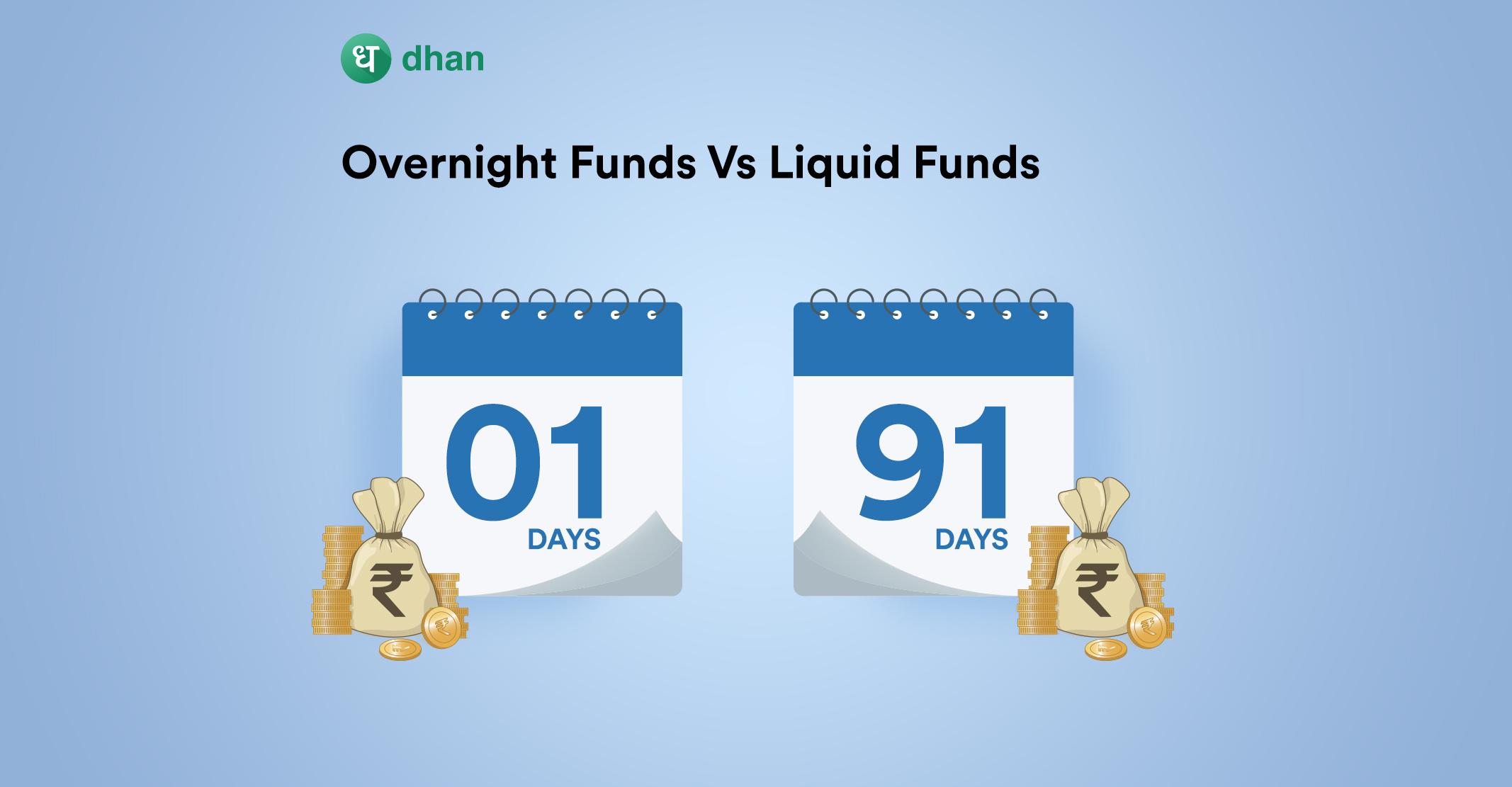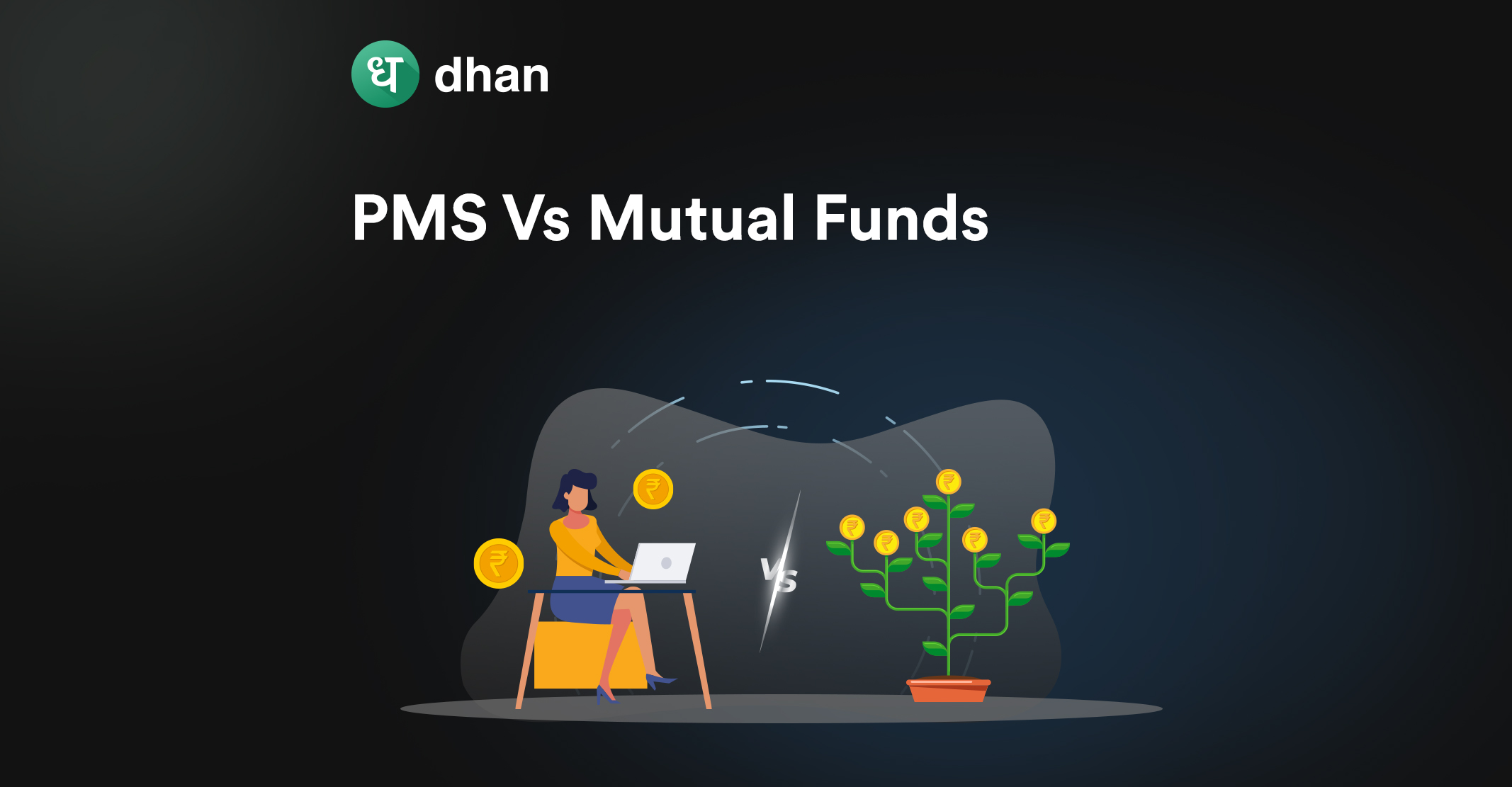Online mutual funds are typically viewed as a long-term investment vehicle. But did you know that certain funds can be used for short-term goals as well? Meet overnight funds and liquid funds. They’re a type of debt fund often compared with the likes of Fixed Deposits and PPFs.
While both are used to temporarily park investors’ money and earn returns, there are differences between overnight and liquid funds. If you want to understand them and decide which one is better for you, you are in the right place.
What Are Overnight Funds?
An overnight fund is an open-ended debt fund that pools money from investors. At the helm of overnight funds are fund managers who buy fixed-income securities that mature in 24 hours a.k.a overnight.
The debt securities include the following instruments:
- Bank deposits
- Collateral Borrowing and Lending Obligation (CBLO)
- Overnight reverse repo
This simply means that an overnight fund gets its principal back overnight. Every overnight fund will start with cash at the opening bell. The fund will proceed to invest in overnight securities and get its capital with interest back the next morning. Rinse and repeat.
As per the mandate by SEBI, overnight funds are only allowed to invest in debt instruments that carry significantly low risk. For example, overnight funds can’t invest in securities that have a credit enhancement rating or structured obligation rating.
Since the securities mature overnight, there is little impact of interest or credit-based risk. However, overnight funds earn low returns of around 3% to 5% as a result. The main reason overnight funds have garnered popularity is that there is no obligation of exit load. Thus, redeeming your money from the fund is easier.
Read 👉 Types of Risk in Mutual Funds
What Are Liquid Funds?
Liquid funds are also open-ended debt funds much like overnight funds. In fact, liquid funds too invest in debt securities that mature quickly. However, these debt securities mature in up to 90 days instead of overnight.
The type of securities liquid funds invest in include the following:
- Commercial paper (CP)
- Corporate bonds
- Government securities
- Treasury bills
Liquid funds are favored as a short-term investment vehicle because of their quick portfolio maturity. However, the chances of interest or credit-based risk are slightly higher in comparison to overnight funds.
Liquid funds are known to generate profits at around 4% to 6%, which is better when compared to overnight funds. The catch is that an exit load is payable on liquid funds if you decide to cash in your investment within 7 days.
Now that you have a basic idea of the concepts, let’s talk about the difference between overnight and liquid funds.
Overnight Funds Vs Liquid Funds: Which is Better?
When compared to other types of mutual funds, both overnight and liquid funds are relatively safer. Both funds offer high liquidity and carry little to no expense ratio. There are many similarities between overnight and liquid funds.
But the devil lies in the details. Read on to know the difference between overnight and liquid funds.
1. Investment Term
To decide which is better for you, it is essential to determine your investment term. If you want to park your money for under a week, overnight funds may be suitable for you. On the other hand, if you can keep your money parked for a minimum of 7 days, you can go for liquid funds.
2. Risk
Another factor to decide when choosing between overnight and liquid funds is what is the degree of risk you are willing to take. With overnight funds, the principal and interest are recovered in a day. Thus, they are the least risky schemes available.
While liquid funds are also low risk, there have been instances where liquid funds invested in securities of companies that had difficulties in paying back the investors. Thus, bringing the element of default risk in liquid funds.
3. Reward
Both funds provide decent returns. However, liquid funds are known to generate mildly better returns than overnight funds based on historical data. At the end of the day, what you should invest in depends on your risk appetite and goals.
For example, investors are known to use overnight funds and liquid funds as a safe haven and pitstop in Systematic Transfer Plans (STPs).
4. Ease of Withdrawal
There is no concept of exit load in overnight funds. Thus, you can take out your investment without incurring these charges.
Liquid funds also did not have exit loads until it was imposed by SEBI in 2019. The exit load on liquid funds ranges from 0.007% on the first day to 0.0045% on the sixth day.
There is no exit load on liquid funds from the 7th day. Thus, if you are okay with withdrawing your investment after a week and enjoying better returns, liquid funds are better for you.
Conclusion
Overnight funds and liquid funds are pit stops where you can park your money for the short term. While both are debt-based schemes, there are some notable differences between the two.
One is not better than the other, as they both have their pros and cons and fulfill certain requirements of investors.
Your choice between overnight and liquid funds should depend on your investment term, risk and reward profile, and preference for investment withdrawal.
Like this? Then you’ll love:



